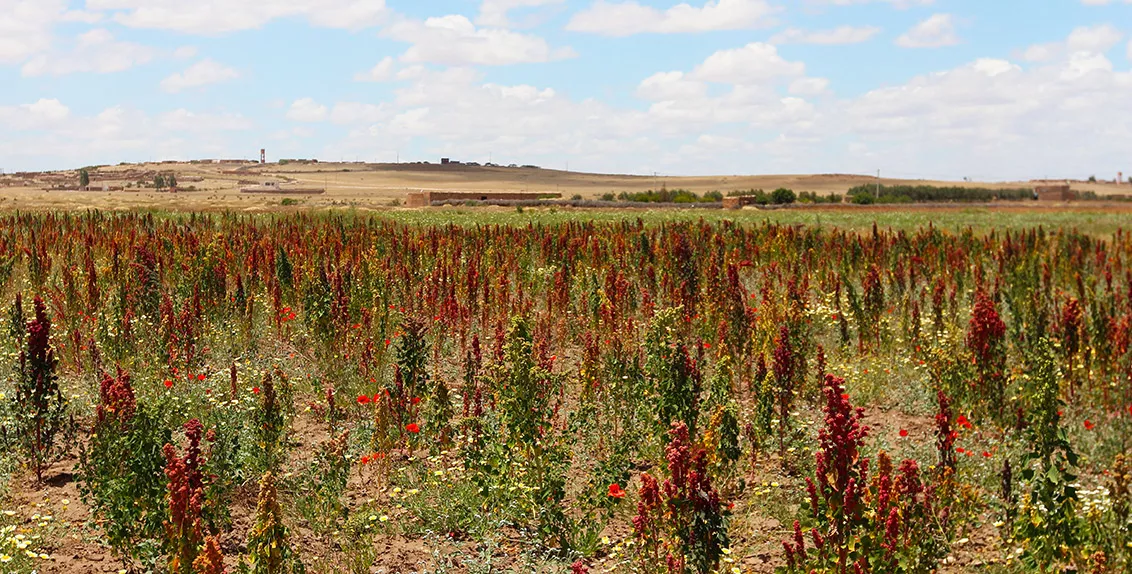ICBA’s quinoa varieties show promise in Morocco - study
15 April 2021
Quinoa varieties introduced in Morocco’s Rehamna Province by the International Center for Biosaline Agriculture (ICBA) perform better under local conditions than those currently used by farmers, says a recent study by Dr. Hayatullah Ahmadzai, of ICBA, and his colleagues from the Mohammed VI Polytechnic University (UM6P), Morocco; the Hassan II Institute of Agronomy and Veterinary Sciences (IAV), Morocco; and McGill University, Canada.
Authors looked at several aspects of quinoa production, including agronomic and nutritional traits of the varieties, as well as costs and benefits. They also conducted a detailed analysis of strengths, weaknesses, opportunities and threats (SWOT) for quinoa production in the country to map out possible interventions to improve value chains.
The study presents different scenarios for quinoa cultivation in manual and mechanized production systems under rainfed and irrigated conditions. It notes that, among other things, quinoa is more economically beneficial than some traditional cereals. For example, it generates much higher profits than barley and wheat when grown under the same conditions (a rainfed and mechanized scenario).
Published in Plants, an open-access journal, the study also states that use of irrigation and organic amendment helps to increase yields by two and three times respectively compared to rainfed conditions.
According to the study, mechanical pearling reduces saponin, an element which gives quinoa a bitter taste, by 68 percent compared to 57 percent achieved through traditional abrasion and washing.
Dr. Hayatullah Ahmadzai, a socio-economist at ICBA and co-author of the study, notes: “Agricultural production in Morocco’s Rehamna Province faces various challenges, including drought and salinity. The introduction of climate-resilient crops such as quinoa is a sustainable option to improve farmers’ incomes, nutrition and food security. However, a major share of the cost of quinoa production goes to post-harvest management, including saponin removal through seed pearling. In most cases, seed pearling is performed manually, which increases the cost without bringing down saponin content to the acceptable threshold. Therefore, more research and development efforts are needed to address this challenge and one of the solutions could be to scale up the development and introduction of low-cost mechanized tools for seed processing, along with irrigation and organic amendment supply.”
The study also shares some lessons learned in the field and makes recommendations for enhancing each component of value chains, which could be incorporated into a national quinoa program.
Overall, it summarizes the results of the recently completed project aimed at improving food security and incomes of smallholder farmers in marginal areas of Morocco through the production, consumption and sale of quinoa.
Under the project, several farmers’ associations started producing value-added quinoa-based products such as couscous. Moreover, five quinoa genotypes from ICBA were certified as varieties by Morocco’s National Food Safety Office (L'Office National de Sécurité Sanitaire des Produits Alimentaires) and approved for commercial cultivation.
Funded by Canada’s International Development Research Centre (IDRC/CRDI), the project was implemented by ICBA in collaboration with the Mohammed VI Polytechnic University and the Ministry of Agriculture, Fisheries, Rural Development, Water and Forests of Morocco.











